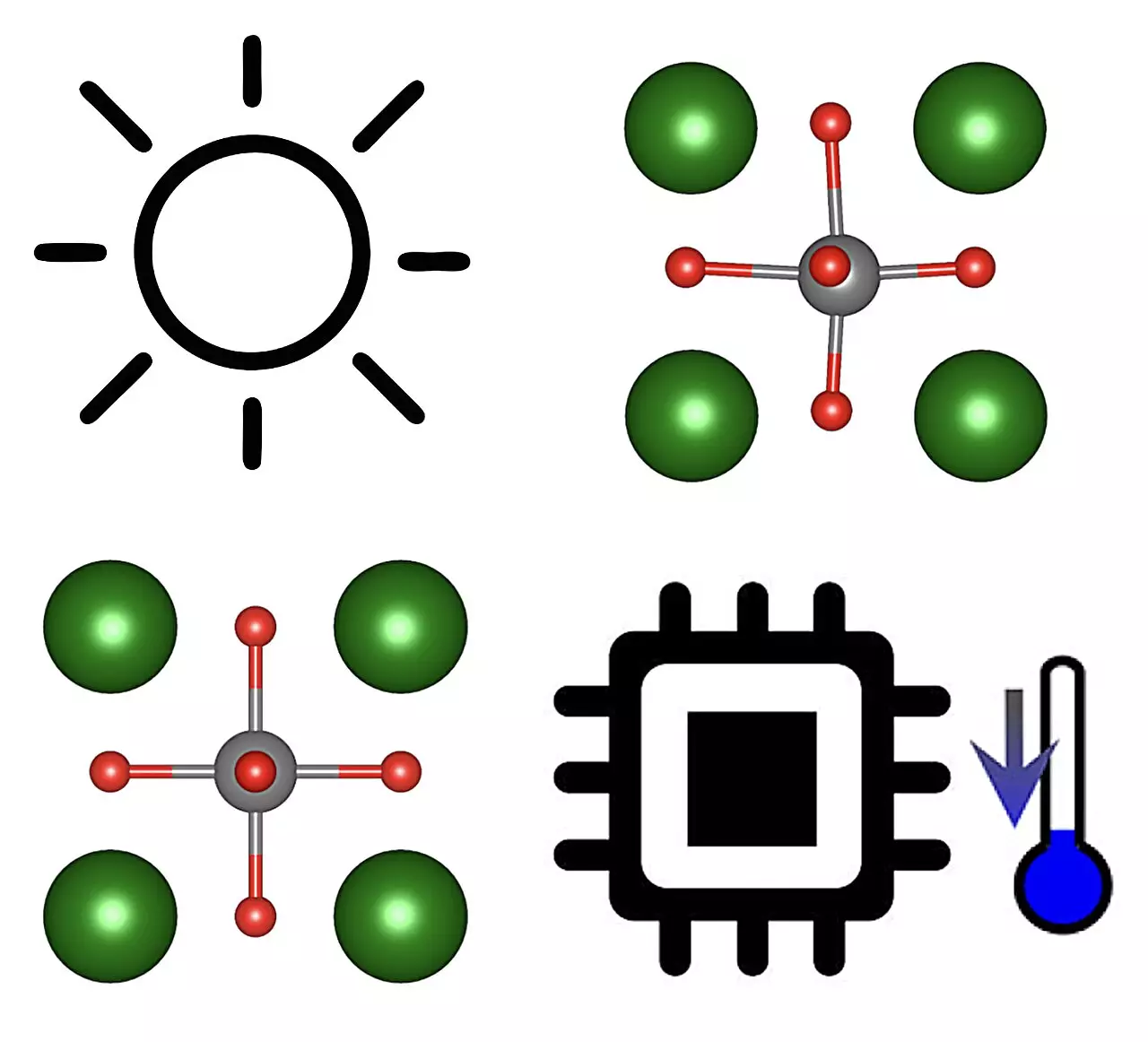The quest for more efficient cooling technologies has become increasingly critical in our energy-conscious society. Traditional refrigeration methods, which rely predominantly on gases and liquids to redistribute heat, contribute significantly to greenhouse gas emissions and energy consumption. However, innovative advancements in the field of solid-state cooling are beginning to offer promising alternatives. Central to this new approach are photocaloric (PC) effects in ferroelectric materials, a topic that recent research has illuminated with encouraging theoretical findings.
Traditional solid-state cooling systems exploit caloric effects, which hinge on the phase transitions of materials when subjected to different types of fields—be they magnetic, electric, or mechanical. However, the effectiveness of these systems is often hamppered by operational constraints, primarily their narrow temperature intervals. For example, while conventional caloric materials may function adequately within a range of 10 Kelvin, they often fall short when broader applicability is required. The result is that many viable cooling applications remain unaddressed, and the urgency to innovate new materials and methods has only grown.
Research conducted by experts at the Institut de Ciència de Materials de Barcelona and Universitat Politècnica de Catalunya aims to solve these limitations by introducing a class of materials capable of exhibiting giant photocaloric effects. In simple terms, these PC effects represent an alternative pathway to achieve cooling that is significantly more adaptable and energy-efficient than their predecessors.
Ferroelectric materials, which can sustain spontaneous polarization, have long been of interest due to their unique properties. The recent studies emphasize the intriguing possibility that shining light on certain ferroelectric materials can induce phase changes between ferroelectric and paraelectric states. This transition can cause dramatic entropy changes—facilitating cooling processes in ways that have not been previously realized.
Authors of the pivotal research, such as Claudio Cazorla and Riccardo Rurali, indicate that such phase transitions could serve to trigger cooling mechanisms using light as the external stimulus. This groundbreaking approach not only offers a broader operational temperature span but can also reduce the complexity of material setups by eliminating the need for electrode placement, streamlining both design and manufacturing processes.
One of the most compelling advantages highlighted in the theory involves the impressive temperature range where photocaloric effects remain effective—spanning approximately 100 Kelvin. This is a stark contrast to conventional caloric effects, which are typically limited to about 10 Kelvin, making PC effects a game-changer for various applications.
This capability lends itself particularly well to specialized applications at micro-scales, such as cooling for central processing units (CPUs) and other electronic components that require efficient thermal management. Moreover, the research posits that the broad operational range could enable cryogenic cooling applications, potentially opening avenues for advancements in quantum technologies that require ultra-low operating temperatures.
Not content to rest on their theoretical laurels, Cazorla, Rurali, and their team have expressed interest in expanding their research beyond ferroelectric materials. Future investigations may delve into different families of materials that could also exhibit light-induced phase transitions. This exploration may incorporate two-dimensional materials and thin films, accelerating not just academic inquiry, but practical applications as well.
Furthermore, a captivating aspect of their ongoing work includes the investigation into charge density waves (CDW) in 2D materials. By understanding how photocaloric effects can potentially suppress competing charge-ordered states within these structures, researchers may uncover new dimensions of efficiency and functionality in cooling applications.
The theoretical groundwork laid by current research provides both a roadmap and a source of inspiration for future scientific inquiry. As the energy crisis looms and the demand for innovative cooling solutions escalates, collaborative efforts in this field could yield transformative advancements.
Ultimately, the exploration of photocaloric effects stands as a testament to the melding of theoretical physics and engineering, with the potential to revolutionize how we think about energy-efficient cooling solutions. As researchers forge ahead, this could pave the way for a new era in solid-state technologies—one that balances ecological responsibility with the relentless drive for technological advancement. The future is undeniably bright (and cool) for solid-state cooling innovations.

